Cars, jellyfish and rip currents: How to stay safe on the beach for Memorial Day weekend
This year's Memorial Day weekend may not be quite as hectic on our local beaches as the last few years have been.
For one thing, stormy weather is expected to last through the week with more rain possible over the weekend. And the massive "Orlando Invades Daytona" event that swamped the beaches and closed bridges in previous years has been canceled after Volusia County Sheriff Mike Chitwood sent cease-and-desist letters to the organizers.
But big crowds are still expected to hit the beach when the sun comes out, and with those weather conditions come dangerous surf.
“We’re expecting hazardous rip current conditions," said Volusia County Beach Safety Ocean Rescue Deputy Chief Tammy Malphurs.
"We rescued more than 100 people out of the water this past weekend,” she said. “I just really want to let people to know to swim in front of a staffed lifeguard tower. That’s the most important thing to remember going to the beach."
May is Nat'l Water Safety Month: How families can keep children safe around water this summer
Star-Spangled Summer Concert Series: A look at lineup for popular Daytona Bandshell event
Crowded airports, cheaper gas: Florida traffic for Memorial Day weekend will be heavy. Here's how bad.
The United States Lifesaving Association has designated the week before Memorial Day — May 22-29, this year — as National Beach Safety Week, "an annual reminder of the joys and hazards associated with the aquatic environment" at the beginning of the busy summer beach season. Here's what you need to know.
How do I stay safe on the beach?
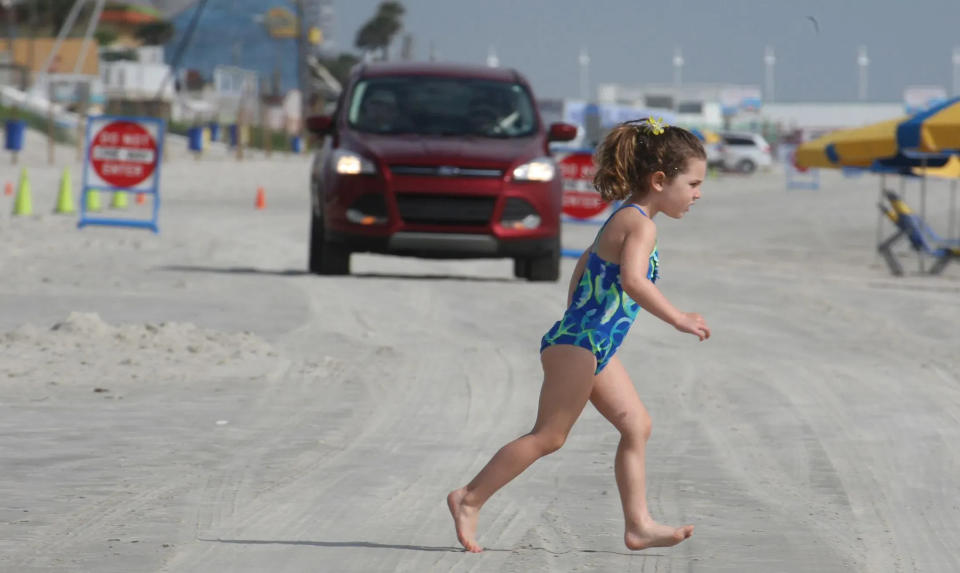
Our unique tradition of allowing driving on our hard-packed beaches for almost as long as there have been automobiles also introduces unique hazards.
Children should've monitored at all times, and held by the hand when crossing traffic.
Do not sit, lie, or place personal property in the driving or parking areas.
Drivng and parking areas are marked by signs and wooden posts. If driving, watch for children, pedestrians, sunbathers and wildlife.
Alcohol, fireworks, pets and glass containers are not permitted on the beach.
If you can't see any local weather warnings here, you'll need to open this story in a web browser.
How do I stay safe in the ocean?
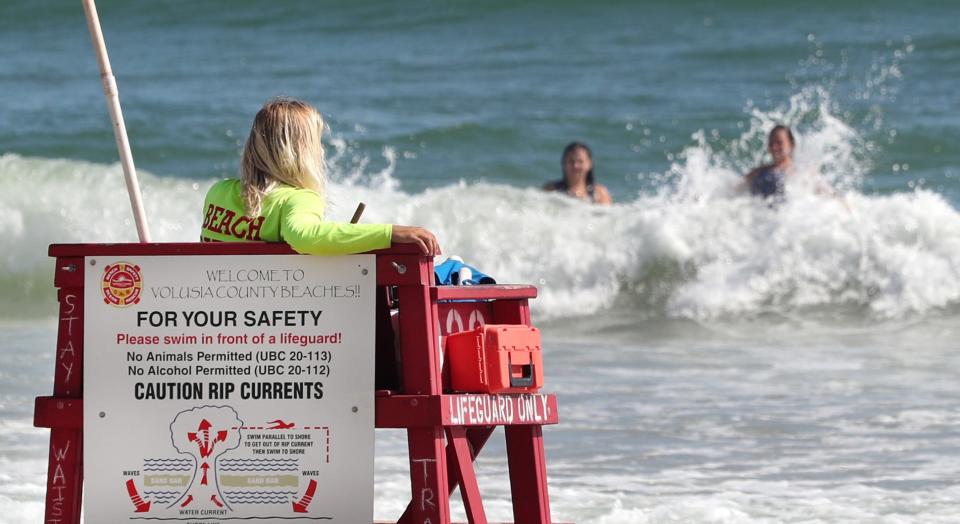
Watch children carefully when they're in the water, no matter how shallow.
Always swim in front of a lifeguard. Some locations have apps to help you find them (here's Volusia's).
Pay attention to warning flags or ask a lifeguard about surf conditions and rip currents.
Swim with a buddy, or flotation device.
If you see someone in trouble, don't become a victim yourself. Throw them something that floats and get help from a lifeguard or call 9-1-1.
It's also National Safe Boating Week: Lifestyle on Florida waters requires a' safety first' mentality
What are rip currents?
Rip currents are powerful channels of water flowing quickly away from shore, most often found at low spots or breaks in the sandbar and near structures such as jetties and piers. Even strong, experienced swimmers caught in a rip current can easily tire themselves out trying to swim against it back to shore.
'I guess the current got him': Port Orange teen drowns in rip current near Daytona Beach Shores
Officials: 10-year-old boy drowns in rip current off Daytona Beach
What do I do if I get caught in a rip current?
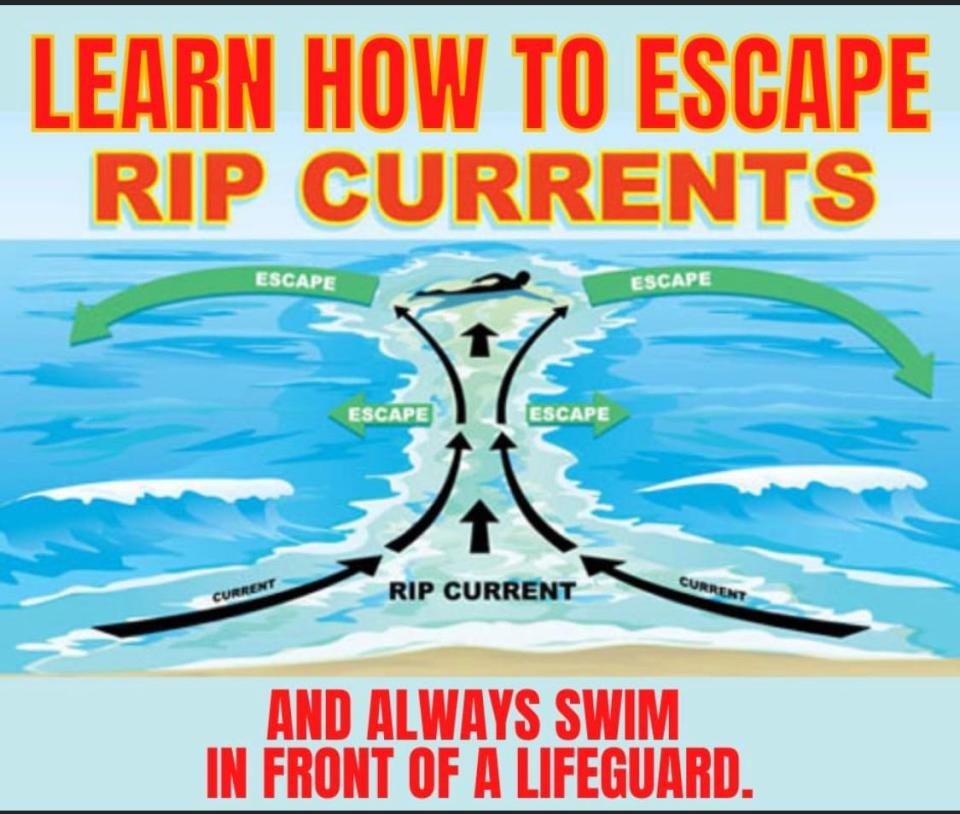
Don't panic or thrash about. Try to stay calm. Don't fight the current.
Swim, float or tread water parallel to the shore until the current fades or you get out of it, and then swim to shore.
If you can't reach the shore, draw attention to yourself by waving or shouting for help.
What do the beach warning flags mean?
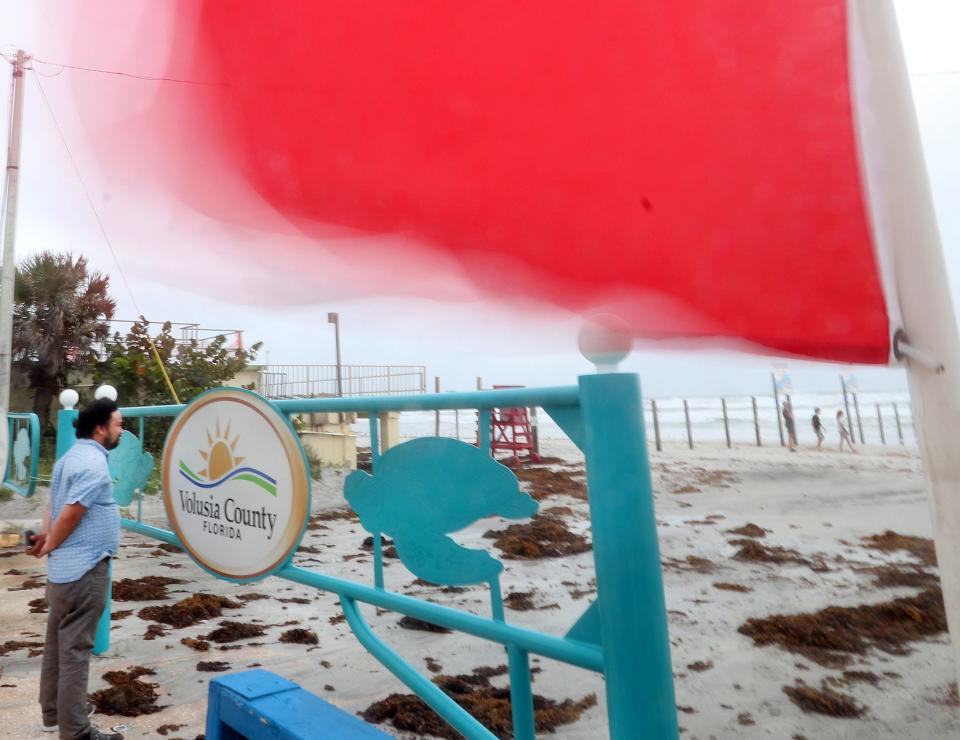
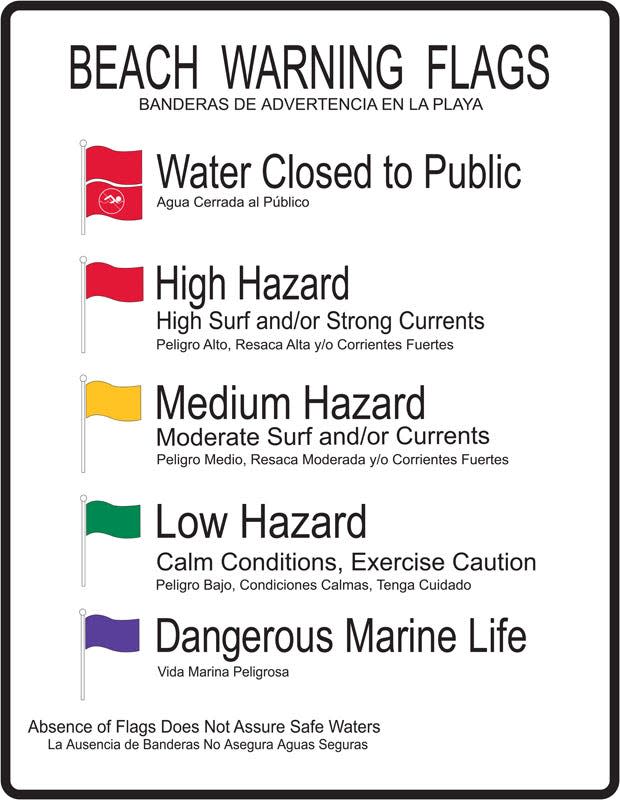
Watch for beach warning flags at lifeguard towers, stations and other locations for a heads-up on current conditions and potential dangers.
Double red flags mean the water is closed to the public.
A red flag is high hazard, meaning high surf and/or strong currents.
A yellow flag is medium hazard, meaning moderate surf and/or currents.
A green flag is low hazard, meaning calm conditions, exercise caution.
A purple flag means that dangerous marine life spotted.
What do I do if I get stung by a jellyfish?
Jellyfish are common in the waters off the east Florida coast, and they can sting you if you brush against one in the ocean or if one washes ashore. Jellyfish stings range from mild to deadly and may require first-aid.
But the suggestions about baking soda or urine? Forget them, they don't help and they may hurt. Here's what you should do:
Ask a lifeguard for help, if one is available.
Rinse the area with vinegar to reduce stings.
Remove any tentacles with tweezers.
Apply a hot compress or soak in hot water for 45 minutes.
Seek medical care if the sting is serious.
What do I do if I'm on the beach and see lightning?
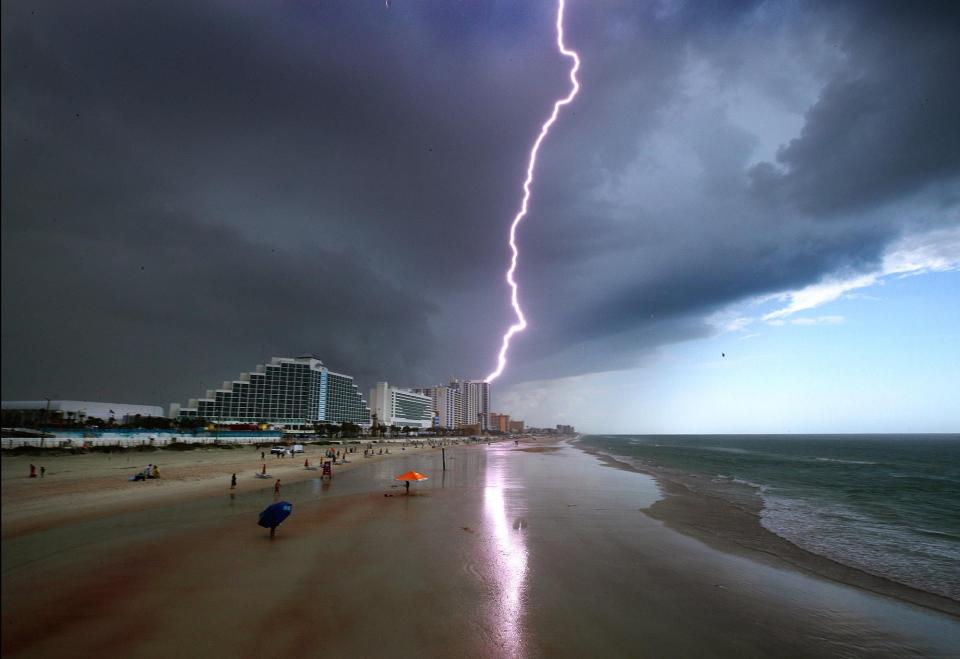
Don't wait until you see the flash, or assume it's safe because you can see how far off the rain is. Lighting can strike as far as ten miles from where it's raining.
As soon as you hear thunder, leave the beach and take shelter in an enclosed vehicle or building. Stay off the beach for at least 30 minutes after that last cap of thunder.
This article originally appeared on The Daytona Beach News-Journal: Rip currents a dangerous concern during National Beach Safety Week

